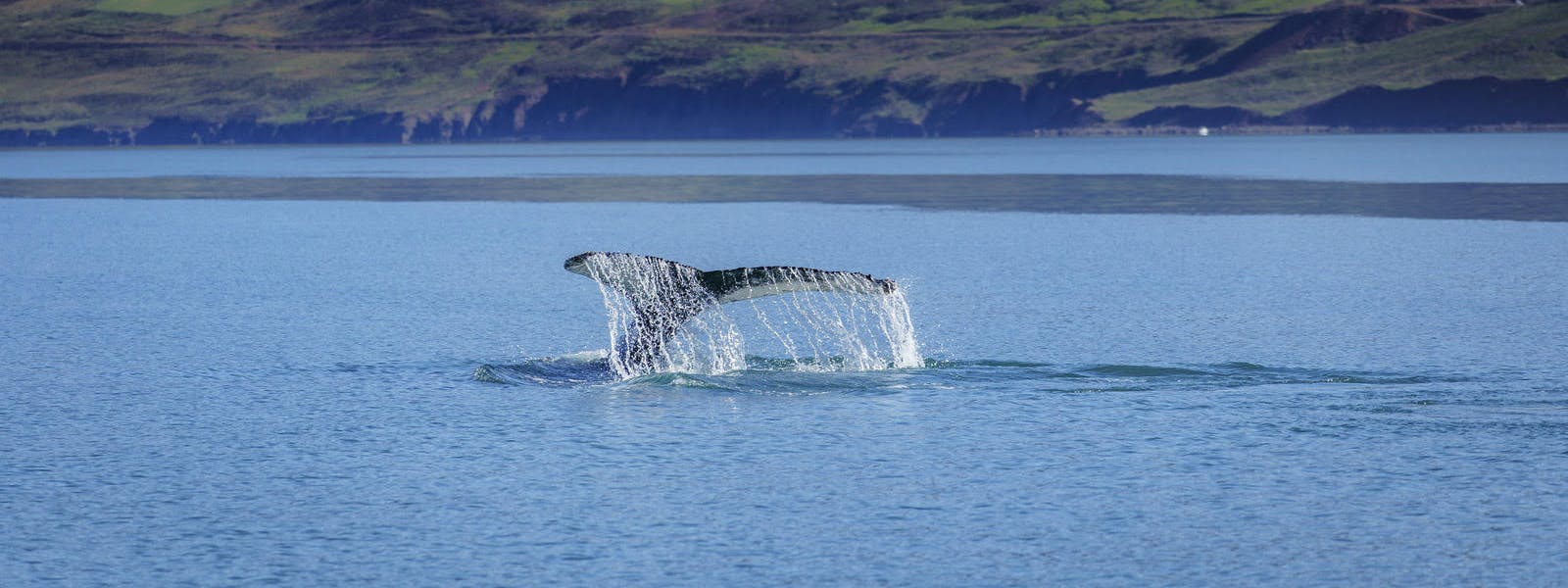
Ultimate Guide to Whales in Iceland
Iceland attracts countless visitors yearly, many eager to embark on a memorable whale-watching adventure. Given the abundance of whale species that inhabit the Icelandic waters, it's no wonder that this small island nation has become a sought-after destination for those seeking an up-close encounter with these gentle giants of the ocean.
In this guide, we'll explore the different species of whales found in Icelandic waters and provide valuable insights to help you make the most of your whale-watching experience.
The Diversity of Whales in Icelandic Waters
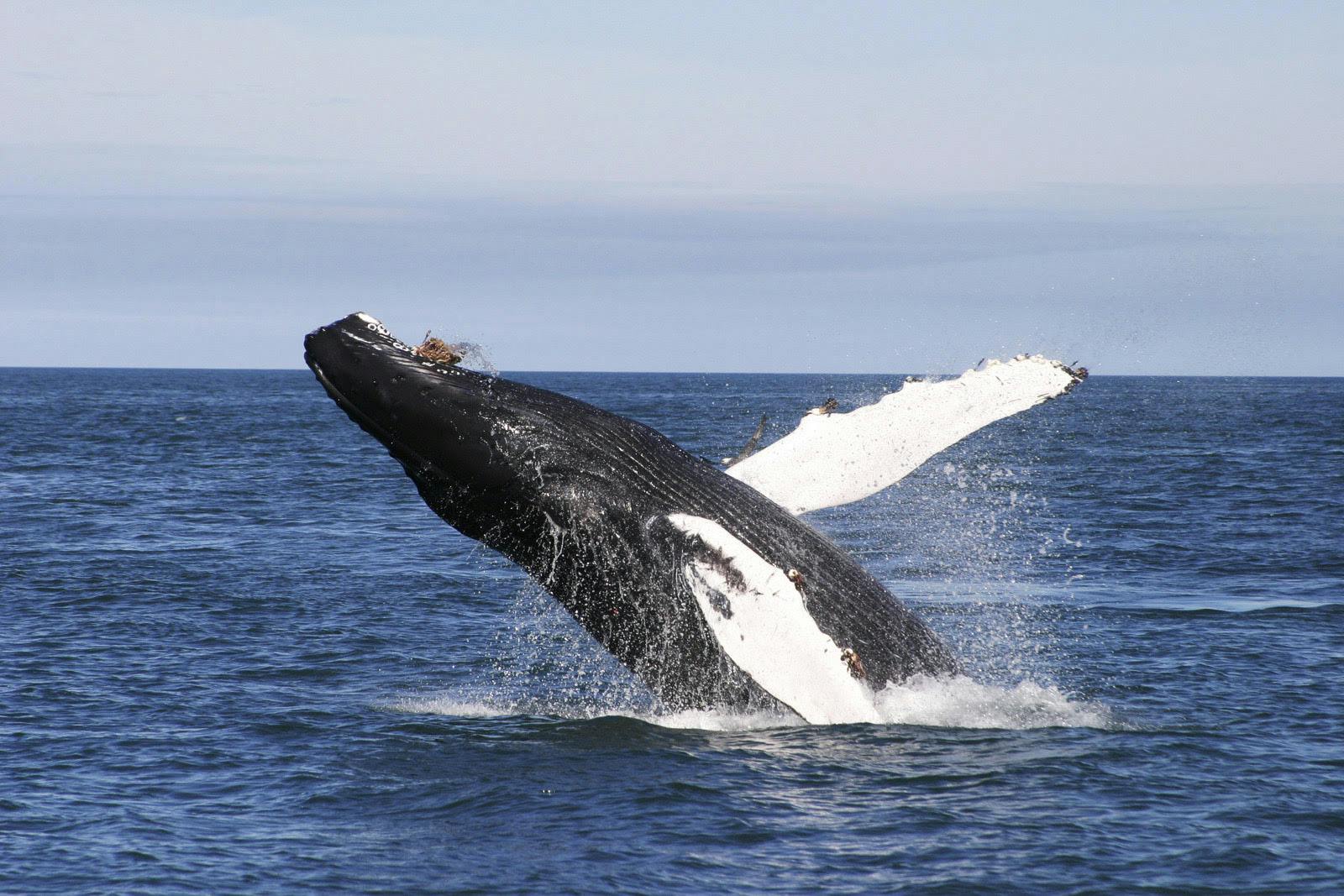
Iceland's rich marine ecosystem is home to various whale species. On a whale-watching trip, you might be fortunate enough to spot multiple species during a single excursion. However, some species are more commonly sighted than others. The four most frequently encountered whale species in Icelandic waters include:
- Humpback whales
- Minke whales
- Blue whales
- Fin whales
These majestic creatures can be seen and appreciated at Perlan, a unique museum and cultural centre in Reykjavik. Visitors can immerse themselves in a cinematic underwater experience on the big screen. Let's delve deeper into the characteristics of each species to understand their fascinating lives and behaviours better.
Humpback Whales
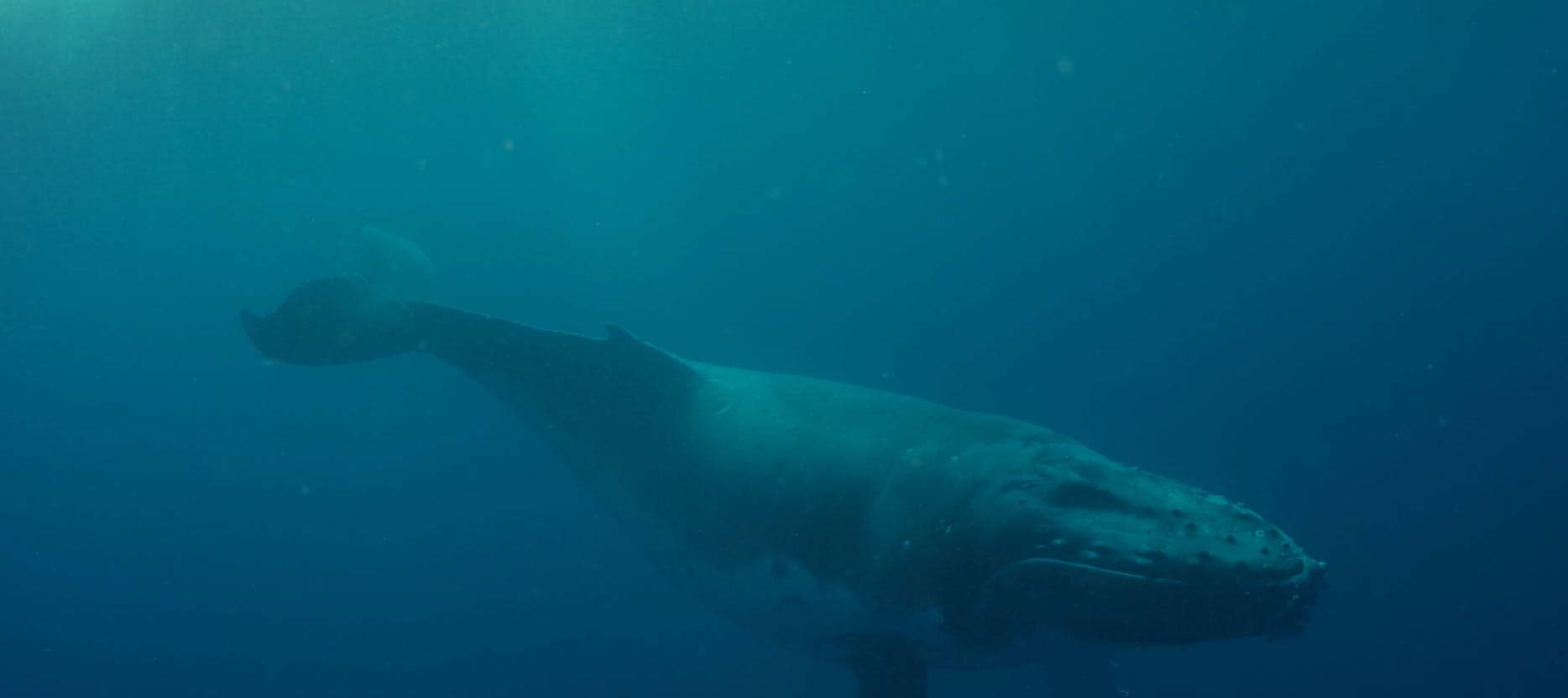
Humpback whales are a truly global species, inhabiting oceans as diverse as the Pacific and the Indian. They are easily identifiable by their dark backs and contrasting white bellies. Their necks feature a pleated texture, but it's their prominent hump that lends them their name.
As baleen whales, humpbacks possess plates on either side of their mouths instead of teeth. These plates function as filters, efficiently capturing food while feeding. Humpback whales have grooves in their throats that allow them to expand their mouths, increasing their capacity for water and food intake.
Humpback whales typically arrive in Iceland around April to breed and feed during summer. Then, they migrate south to warmer waters in October. Due to their tendency to swim close to shore, humpbacks can often be spotted on shorter excursions out of Faxaflói Bay in Reykjavik or Skjálfandi Bay in Húsavík.
One particularly mesmerizing behaviour unique to humpback whales is the peduncle throw. During this manoeuvre, the whale lifts its tail and rear end out of the water and slams back down into the ocean with a swift twisting motion. This powerful display is just one example of the fascinating behaviours exhibited by these magnificent creatures.
Minke Whales
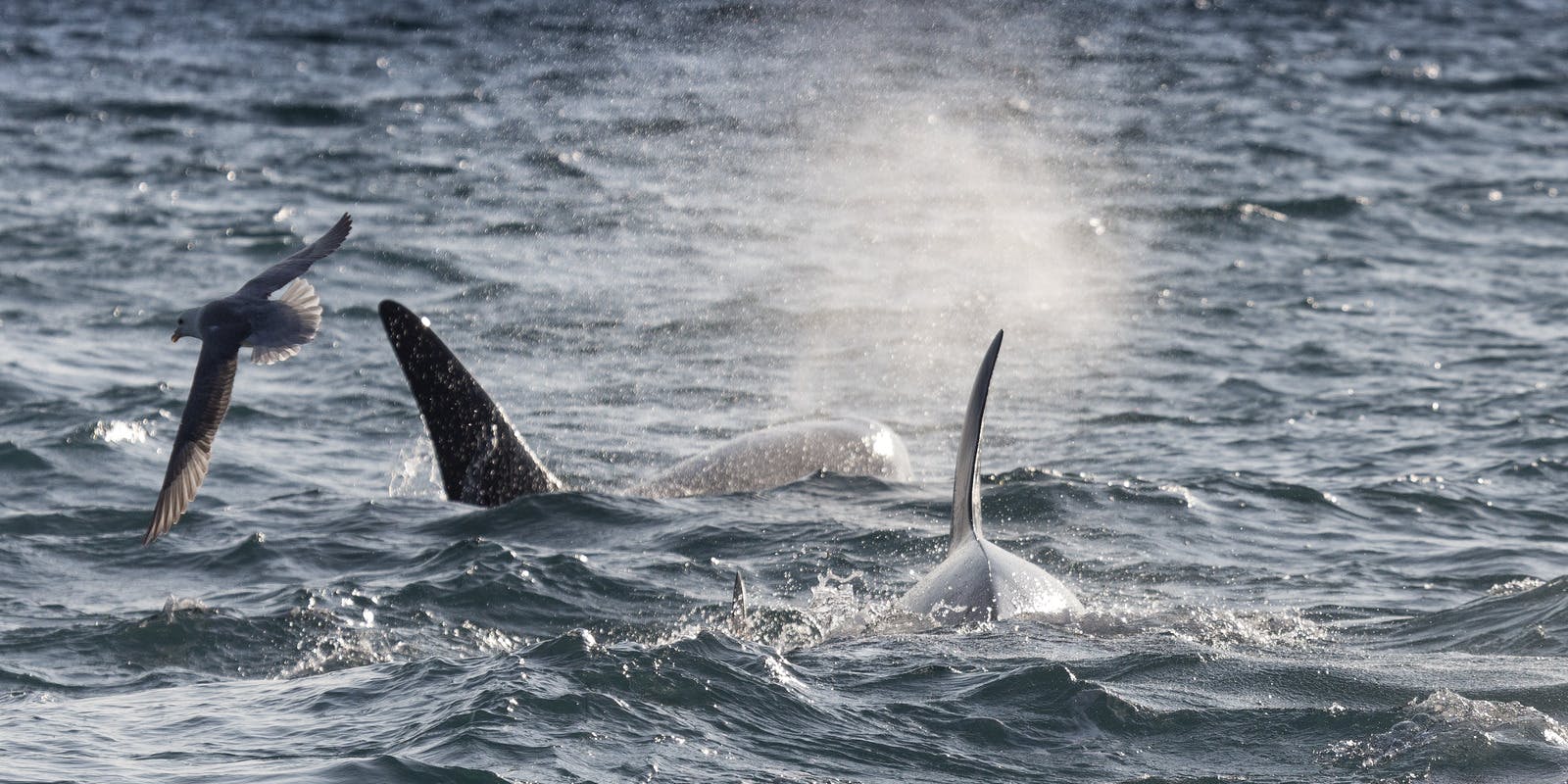
Minke whales are the smallest of the baleen whale species found in Icelandic waters and one of the most populous. They possess dark bodies with a dorsal fin on two-thirds down their backs. Additionally, these whales have whitish-cream baleen plates on the sides of their mouths, which help in their feeding process.
Known for their curiosity, minke whales are known to approach boats to investigate more closely. However, their behaviour can be quite unpredictable. They may surface several times in rapid succession, followed by a longer, deeper dive, only to reemerge in a completely different location.
While it is legal to hunt minke whales for food in some countries, strict quotas are enforced to ensure the sustainability of their populations. As a result, minke whale meat can be found on some restaurant menus. However, after experiencing the wonder of these creatures on a whale-watching tour, some individuals may have a different appetite for consuming whale meat. This highlights the ongoing debate surrounding whaling practices and the importance of balancing cultural traditions with environmental conservation.
Blue Whales
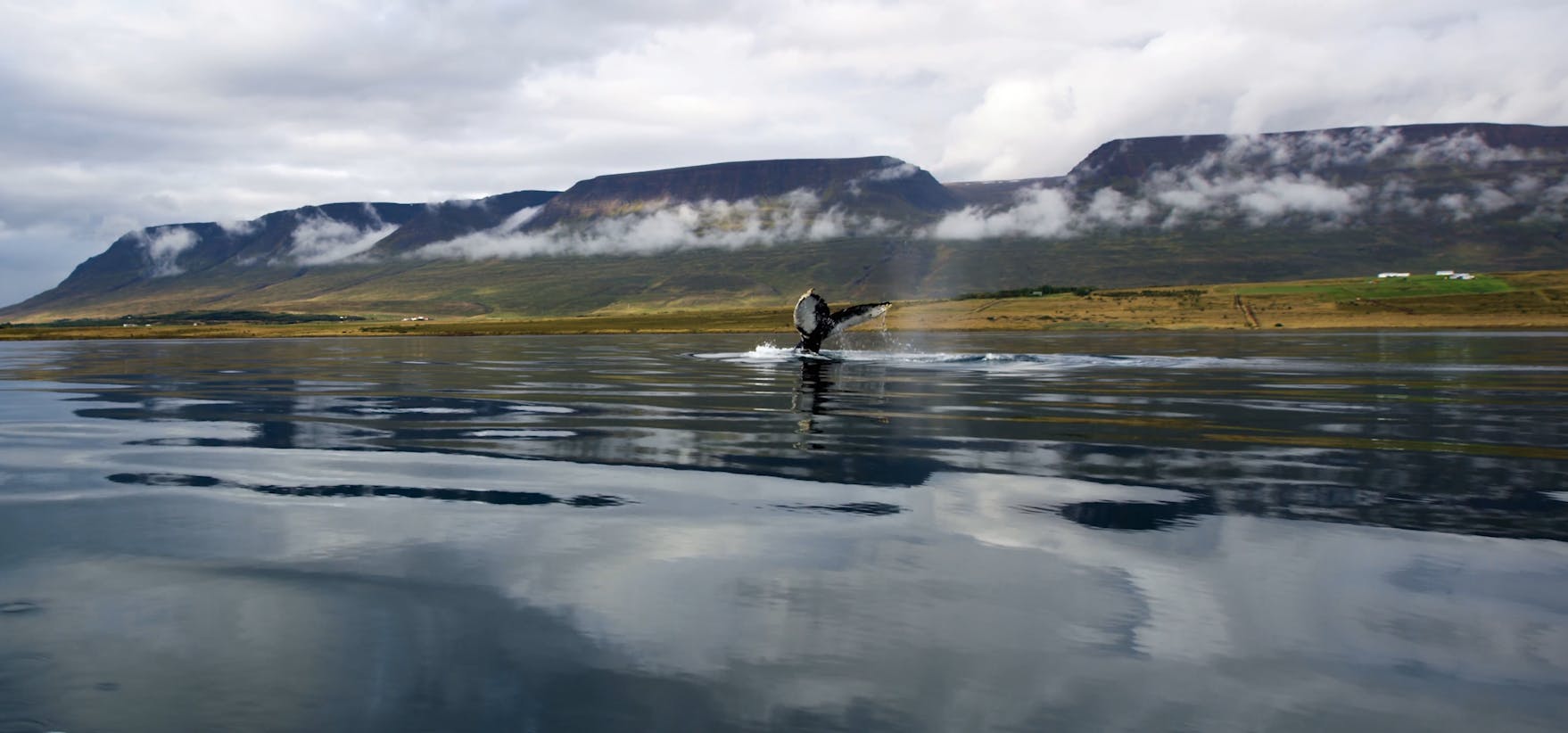
The blue whale, a type of baleen whale, is known for its grey colouration, which appears blue when underwater. Classified as an endangered species by the World Wildlife Fund (WWF), sightings of these magnificent creatures are rare and considered a stroke of luck. However, they have been occasionally spotted in Húsavík's Skjálfandi Bay during the summer, making a June visit a potentially rewarding experience.
Even if you don't spot a blue whale in the wild, Húsavík's Whale Museum offers a unique opportunity to appreciate their immense size by displaying a blue whale skeleton. Blue whales reach up to 30 meters in length and are the largest mammals ever to inhabit Earth.
It is worth noting that the blue whales found in the Arctic are slightly smaller than their Antarctic counterparts. Despite this difference, Arctic blue whales remain colossal in size, weighing an average of 100 tonnes. To put this into perspective, their weight is comparable to a fully-loaded aircraft – potentially the same type of plane that will fly you to Iceland. The sheer enormity of these gentle giants serves as a reminder of the extraordinary diversity and wonders of the natural world.
Fin Whales
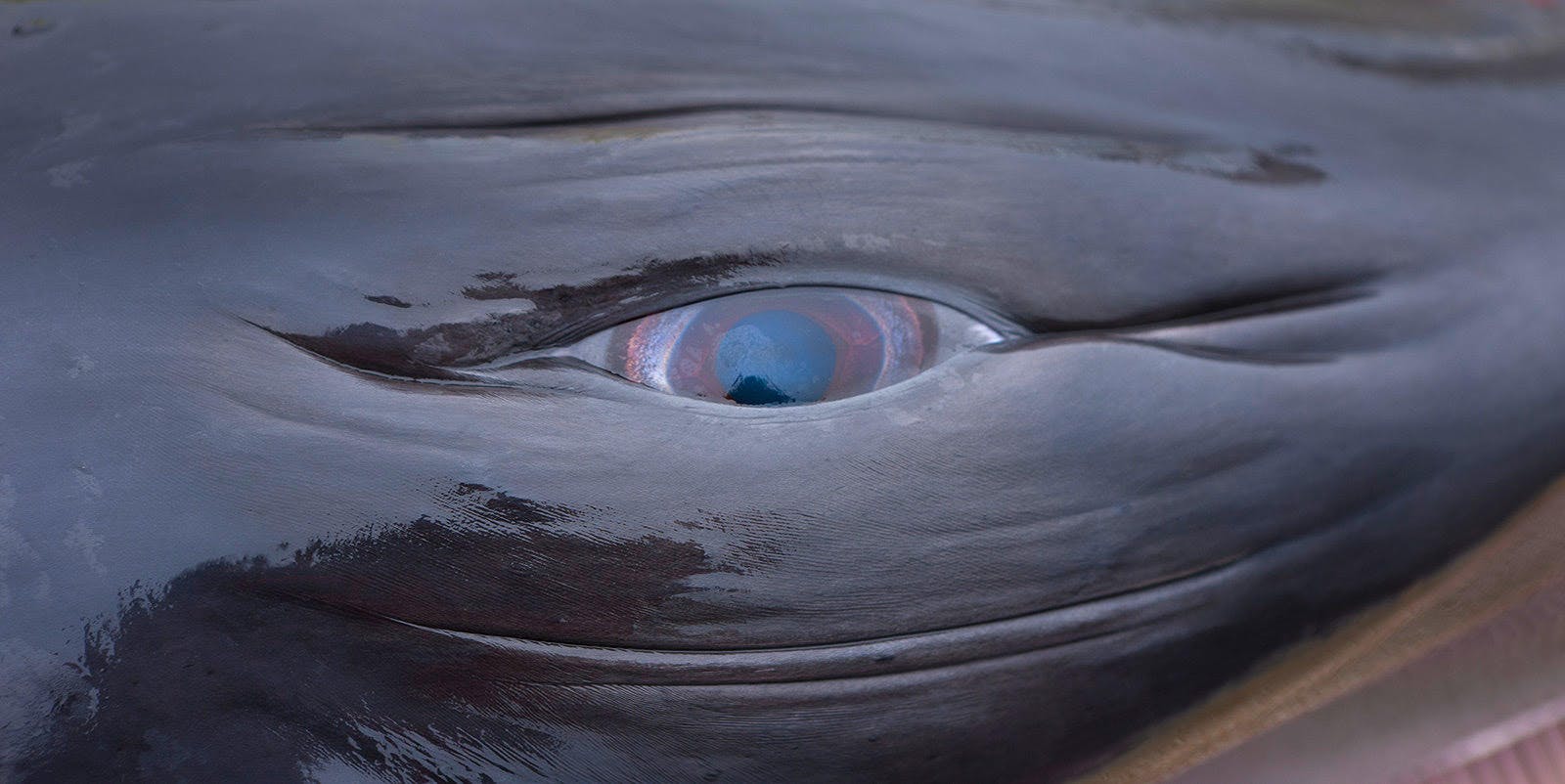
Fin whales are the second-largest whale species globally and in Iceland, ranking just after the blue whale. These impressive creatures can reach lengths of up to 20 meters. Observing its back is one of the easiest ways to identify a fin whale. If you notice a ridge behind the dorsal fin, you're likely looking at a fin whale, which has earned it the nickname "razorback."
Another unique characteristic of fin whales is their asymmetrical mouth colouring. As the whale opens its jaws, you may observe that the lower right jaw is white, while the lower left jaw is black. Interestingly, the whale's tongue exhibits asymmetry in reverse.
Unlike other whale species, fin whales tend to inhabit the open sea, preferring to keep their distance from coastlines. As social creatures, they typically travel in pods ranging from two to seven whales. Some researchers have proposed that fin whales work cooperatively to capture schools of fish, forming a circle to increase fish density and facilitate easier feeding.
In addition to the species mentioned above, Iceland's waters are home to other types of whales, further contributing to the region's rich biodiversity.
Sperm Whales
Icelandic waters host an impressive array of over twenty whale species, including the remarkable sperm whale. Known for their extraordinary diving capabilities, sperm whales can plunge to depths of up to 3 kilometres while holding their breath for up to two hours. This remarkable feat allows them to hunt for fish and squid in the ocean's darkest depths.
As toothed whales, sperm whales can grow up to 18 meters, approximately twice the length of an average minke whale. Their impressive size and extraordinary diving abilities contribute to their status as one of the ocean's most captivating inhabitants.
Sei Whales
Sei whales are elegantly streamlined creatures perfectly adapted to life in the ocean. As rapid swimmers, they can reach impressive speeds of up to 45 kilometres per hour. Belonging to the baleen whale family, sei whales typically favour open-water environments.
Unfortunately, sei whales are classified as endangered, which makes any sighting a rare experience. As we continue to learn more about these graceful and swift marine animals, it underscores the importance of conservation efforts to protect these and other endangered species for future generations to appreciate.
Orcas
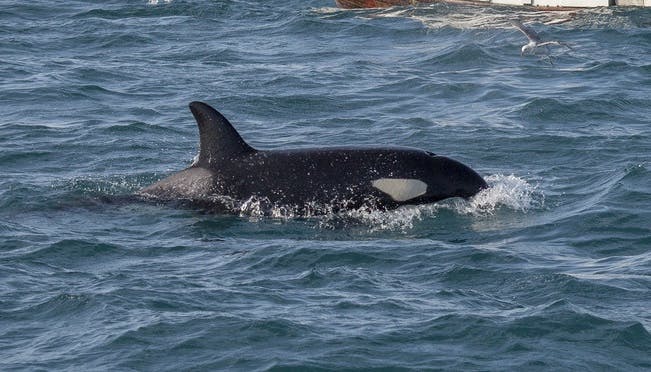
Orcas, with their striking black and white appearance, are commonly referred to as killer whales. However, it may come as a surprise that they are not, in the strictest sense, whales at all. They are, in fact, part of the dolphin family. Yet, due to their teeth, orcas are also classified as toothed whales, illustrating how the distinctions between various classifications can sometimes become ambiguous.
The most common season for orca sightings in Iceland is during winter, particularly between January and March. During this period, orcas are often found around the Snæfellsnes Peninsula and the Westfjords, following herring and other fish species that migrate to Icelandic waters. These areas are known for their rich marine life, which attracts not only orcas but also other marine mammals and seabirds.
The captivating nature of orcas, along with the numerous other whale species found in Icelandic waters, has undoubtedly piqued the interest of many. If you are among those eager to learn more about these extraordinary marine mammals, consider visiting Perlan, a unique museum and cultural centre in Reykjavik. Here, you can dive deeper into the world of whales and gain a greater appreciation for their beauty and complexity.
Popular tours
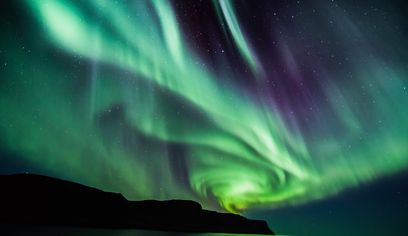
The #1 Northern Lights Tour in Iceland | FREE photos, Homemade Hot Chocolate & cinnamon buns

Reykjavík Northern Lights Cruise

Aurora Basecamp Night pass

Reykjavík Whales & Northern Lights

Northern Lights Tour from Reykjavik, With Photographs, Local Pastrys and Hot Chocolate

DT 310 Private Superjeep Northern Lights

NORTHERN LIGHTS AND STARGAZING (Guided in 10 languages)

GOLDEN CIRCLE AND NORTHERN LIGHTS (Guided in 10 languages)

Aurora Viking - The Private Tour - Northern Lights Tour

Northern Lights w/Aurora Viking - free pro photos - Free Retry – minibus
